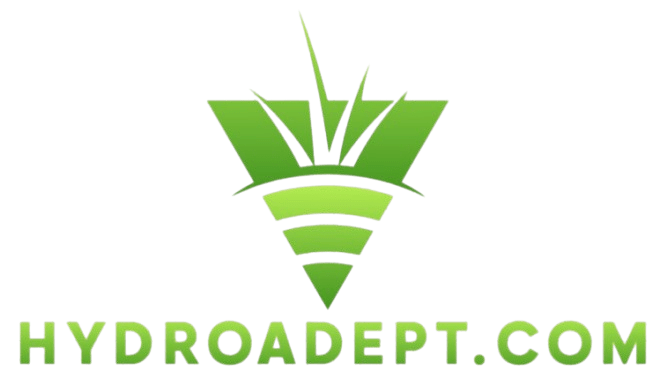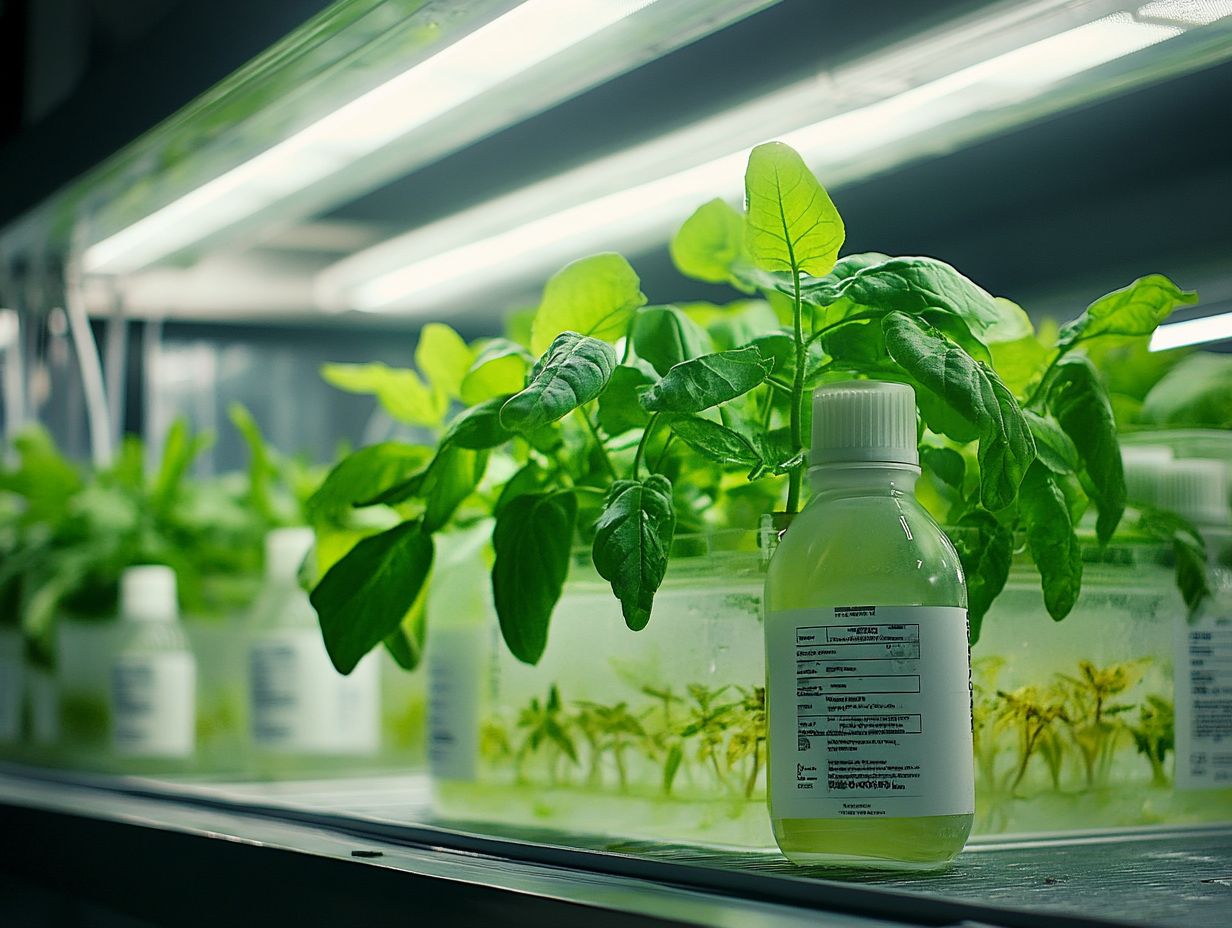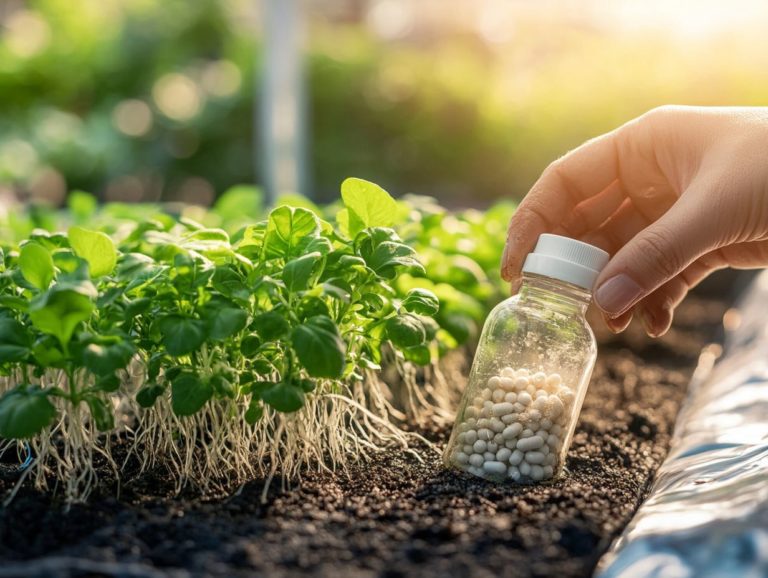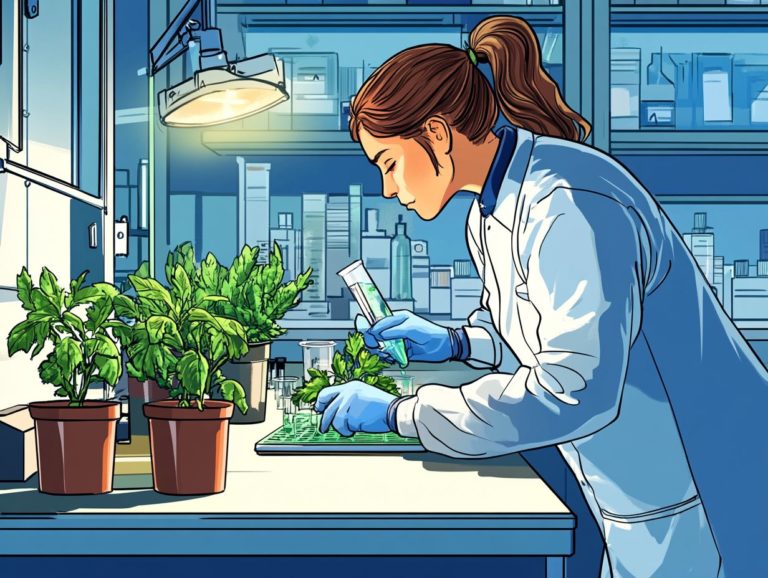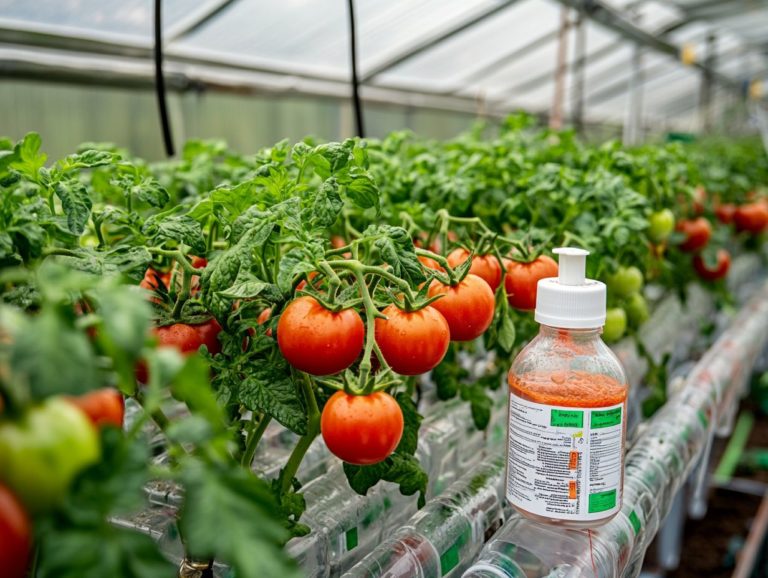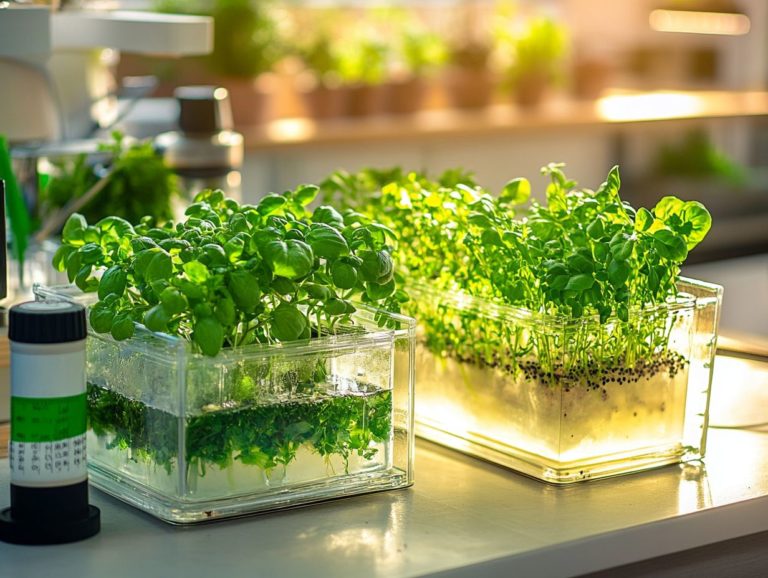Hydroponic Nutrients: A Beginner’s Guide
Hydroponic gardening offers a groundbreaking way to grow plants without soil. Your success depends on understanding the essential nutrients your crops need.
This guide outlines the fundamentals of hydroponic nutrients, including large and small nutrients that are vital for plant health. You ll learn how to choose the right nutrient solutions, measure levels accurately, and identify common deficiencies.
You can weigh the advantages and disadvantages of organic versus synthetic options, helping you make informed choices. Dive into this knowledge to unlock the secrets of thriving hydroponic plants!
Contents
- Key Takeaways:
- What are Hydroponic Nutrients?
- Essential Nutrients for Hydroponic Plants
- Choosing the Right Nutrient Solution
- How to Measure and Adjust Nutrient Levels
- Common Nutrient Deficiencies and How to Fix Them
- Organic vs Synthetic Nutrients
- Frequently Asked Questions
- What are hydroponic nutrients and why are they important for beginners?
- What types of hydroponic nutrients are available for beginners?
- How do I know which hydroponic nutrients are right for my plants?
- Can I make my own hydroponic nutrient solution?
- How often do I need to replenish hydroponic nutrients in my system?
- Do I need to adjust the pH level of my hydroponic nutrient solution?
Key Takeaways:
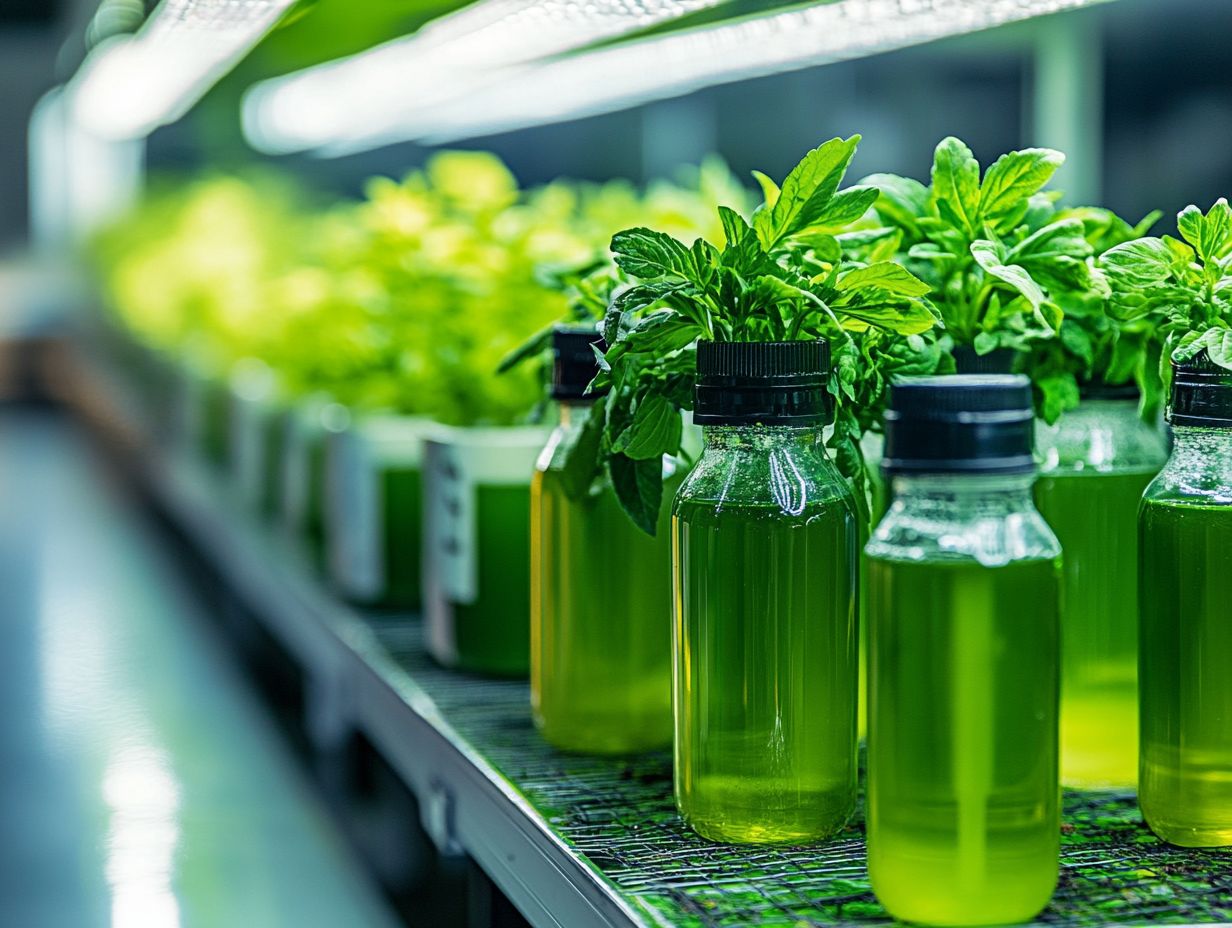
- Understand essential nutrients for your hydroponic plants to promote exceptional growth!
- Choose the right nutrient solution based on plant type, growth stage, and water quality.
- Measure and adjust nutrient levels properly to prevent common deficiencies.
What are Hydroponic Nutrients?
Hydroponic nutrients are essential for optimal plant growth without soil. This method uses nutrient-rich solutions to ensure your plants get the vital large and small nutrients necessary for robust development.
Typically, hydroponic nutrient formulas contain a balanced mix of elements such as nitrogen, phosphorus, potassium, calcium, magnesium, and trace elements. These work together to enhance plant health and productivity.
Essential Nutrients for Hydroponic Plants
Essential nutrients for your hydroponic plants are divided into large and small nutrients, each playing an important role in maintaining plant health and maximizing productivity.
Large nutrients, such as nitrogen, phosphorus, and potassium, are needed in larger amounts. They are crucial for processes like chlorophyll production, root development, and energy transfer.
Small nutrients, including boron, iron, and zinc, may be needed in smaller quantities, but they are just as vital for enzyme function and nutrient absorption. Ensuring that your plants receive both categories of nutrients will help them thrive beautifully in a hydroponic environment.
Large Nutrients and Small Nutrients
Large nutrients like nitrogen, phosphorus, potassium, calcium, magnesium, and sulfur are crucial for your plants’ growth, while small nutrients such as boron, copper, iron, and zinc play vital roles in various physiological functions within your hydroponic setup.
Each nutrient, whether classified as large or small, contributes uniquely to the intricate processes of nutrient absorption, chlorophyll synthesis, and root development, ultimately shaping the health and productivity of your cultivated plants.
Understanding the delicate balance and interactions between these large and small nutrients is essential for anyone immersed in hydroponics. For example, nitrogen is essential for robust vegetative growth, whereas phosphorus is pivotal for developing strong roots and vibrant flowers. To truly grasp these concepts, it’s beneficial to explore the basics of hydroponic systems. Potassium, on the other hand, enhances overall plant vigor and resilience against stress.
Deficiencies in these nutrients can lead to distinct symptoms. You might notice nitrogen deficiency manifested as yellowing leaves, while a shortage of phosphorus often results in stunted growth and dark green foliage. Small nutrient deficiencies present their own set of challenges, such as iron deficiency causing chlorosis in younger leaves.
By cultivating a keen awareness of these interactions, you can significantly elevate the success of your hydroponic systems.
Choosing the Right Nutrient Solution
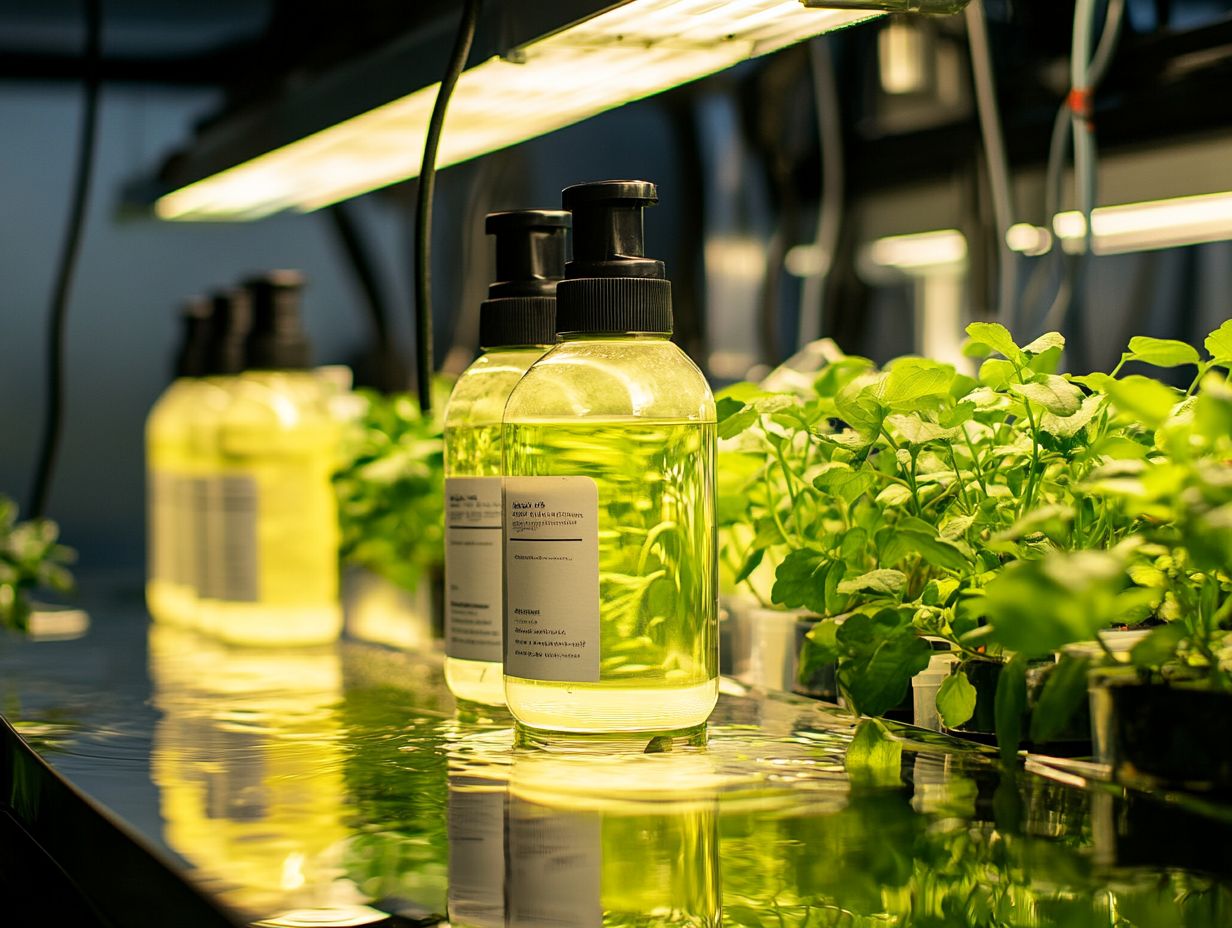
Selecting the ideal nutrient solution for hydroponics requires thoughtful consideration of the specific nutrient needs of your plants, as each species has distinct requirements throughout its lifecycle.
A balanced nutrient solution is essential, containing the right concentrations of macronutrients and micronutrients to foster optimal plant growth.
It s also important to maintain proper pH levels and electrical conductivity within the solution to ensure maximum nutrient efficiency and absorption for your plants to thrive.
Factors to Consider
When selecting a nutrient solution for your hydroponic system, consider several key factors, including:
- pH level
- Electrical conductivity
- Specific nutrient balance required for your plants
Maintaining optimal nutrient levels and fine-tuning your nutrient mix can significantly impact nutrient efficiency and overall plant health, leading to robust growth and impressive yields.
Monitoring the pH is crucial for your plants’ health! The pH should typically fall between 5.5 and 6.5 for most crops. You can use pH meters or test kits for accurate readings. If adjustments are needed, simply use pH up or down solutions based on the readings.
Electrical conductivity (EC) tells you how concentrated your nutrients are. Higher EC values can signal increased salinity, which may hinder nutrient uptake and lead to issues like nutrient burn. Conversely, insufficient EC levels can cause deficiencies and stunt growth.
By properly managing these factors, you ll create a thriving growing environment and prevent complications like root rot, often caused by poor drainage or imbalanced nutrient solutions.
How to Measure and Adjust Nutrient Levels
Measuring and adjusting nutrient levels in hydroponic systems is vital for fostering robust plant growth. Engage in regular nutrient testing and closely monitor the solutions you use.
This process involves evaluating the concentration of essential nutrients using specialized tools and techniques. By ensuring your plants receive the right nutrient replenishment, you enable optimal root development and absorption, setting the stage for a thriving hydroponic system garden.
Tools and Techniques
You have access to various tools and techniques for effective nutrient testing in hydroponics, including pH meters and electrical conductivity (EC) meters. These instruments are crucial for accurately monitoring nutrient solutions.
Regular use of these tools helps prevent nutrient deficiencies and maximizes plant growth and yield. pH meters measure the acidity or alkalinity of your nutrient solution, significantly influencing nutrient absorption, while EC meters assess the overall nutrient concentration.
To achieve the best results, establish a routine for testing these parameters and adjust your solutions as needed. Maintaining clean instruments and following manufacturer guidelines will further enhance the reliability of your readings, creating a healthier growing environment for your plants.
Common Nutrient Deficiencies and How to Fix Them
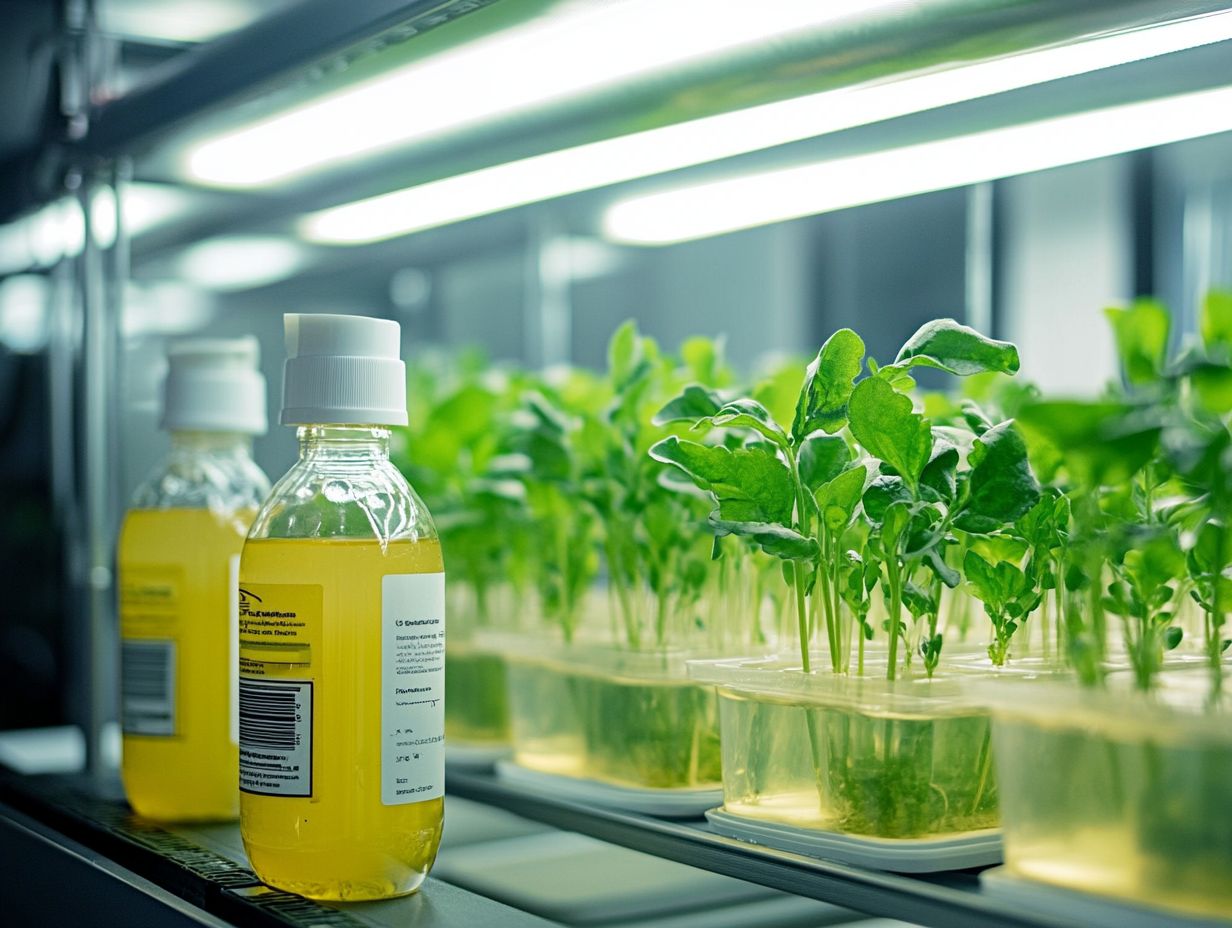
Common nutrient deficiencies in your hydroponic plants can profoundly affect their growth and overall health, so you must act quickly to address these issues.
When essential nutrients like nitrogen, phosphorus, or potassium are lacking, you might notice signs such as stunted growth, yellowing leaves, or inadequate root development.
Make timely nutrient adjustments and choose the right nutrient solutions to restore the delicate balance your plants need to thrive.
Identifying and Solving Issues
Identifying and addressing nutrient deficiencies in hydroponic plants requires a keen eye for symptoms and a deep understanding of their root causes, such as inadequate nutrient absorption or nutrient solution imbalances. By closely monitoring plant health and chlorophyll levels, you can make informed nutrient adjustments that promote growth and effectively recover from deficiencies.
For example, if you notice yellowing leaves, it could be a sign of nitrogen deficiency. Stunted growth might indicate a lack of phosphorus. It’s essential to regularly test the pH and electrical conductivity (EC) levels of your nutrient solution because any fluctuations can impede how plants take in nutrients.
By adjusting the nutrient solution accordingly, you can restore balance. Incorporating organic fungicides can help combat root diseases that may hinder the plant’s ability to absorb nutrients. Ensuring that nutrients are evenly distributed throughout your growing system will also promote healthier growth and prevent localized deficiencies.
Implementing these proactive measures allows you to cultivate resilient plants and achieve optimum yields.
Organic vs Synthetic Nutrients
The discussion surrounding organic versus synthetic nutrients in hydroponics hinges on several key factors, including nutrient quality, availability, and their overall influence on plant health.
Organic nutrients, sourced from natural origins, typically enhance soil health and promote biodiversity. Synthetic nutrients, which are man-made fertilizers, offer precise concentrations and quicker results, presenting a delicate balance between efficacy and environmental impact.
Weighing these factors carefully is crucial for your hydroponic success!
Pros and Cons of Each Type
Each type of nutrient, whether organic or synthetic, carries its own unique set of advantages and disadvantages that can directly influence your plants’ growth and health. Organic nutrients are known for enhancing soil quality and boosting microbial activity, but they tend to release nutrients more slowly. In contrast, synthetic options provide higher nutrient efficiency and immediate availability.
In practical terms, organic nutrients shine in sustainable farming and gardening practices, where long-term soil health and ecological balance are paramount. Conversely, you might find synthetic nutrients more appealing in scenarios requiring quick results, such as in commercial agriculture or during critical growth phases.
Knowing when to apply each type is crucial. For established plants, you might opt for organic nutrients to promote resilience. For seedlings, reach for synthetic fertilizers to provide the immediate nourishment they desperately need. To make informed decisions, consider Understanding Hydroponic Nutrient Solutions, as each choice influences short-term growth and significantly impacts long-term plant health and soil ecology, ultimately shaping your future cultivation practices.
Frequently Asked Questions
What are hydroponic nutrients and why are they important for beginners?
Hydroponic nutrients are essential plant growth supplements used in hydroponic gardening. They provide plants with the necessary nutrients to grow in a soilless environment. For beginners, hydroponic nutrients are important because they ensure healthy and robust plant growth without the need for traditional soil.
What types of hydroponic nutrients are available for beginners?
Beginners can choose between liquid and powder nutrients. Liquid nutrients are ready to use, while powder requires mixing with water. Both types provide the necessary nutrients for plant growth, but some growers prefer one over the other for various reasons.
How do I know which hydroponic nutrients are right for my plants?
The type of hydroponic nutrients you choose will depend on the type of plants you are growing, as different plants have different nutrient requirements. Research the specific nutrient needs of your plants and choose a nutrient solution that matches those requirements. You can also consult with experienced hydroponic growers for advice.
Get started on your hydroponic journey today!
Can I make my own hydroponic nutrient solution?
Yes, you can create your own hydroponic nutrient solution using household items like Epsom salts, baking soda, and water. However, this requires precise measurement and may lack essential nutrients for optimal plant growth.
For best results, grab some pre-made nutrient solutions designed for hydroponic gardening! They are especially helpful for beginners.
How often do I need to replenish hydroponic nutrients in my system?
The frequency depends on your system type and the nutrient solution. Generally, replenish hydroponic nutrients every 1-2 weeks to keep your plants thriving.
Do I need to adjust the pH level of my hydroponic nutrient solution?
Yes! Keeping the right pH level is vital for your plants to absorb nutrients effectively. Aim for a pH level between 5.5 and 6.5.
Use a pH testing kit to monitor and adjust your nutrient solution as needed. This simple step can dramatically improve your plant health!
